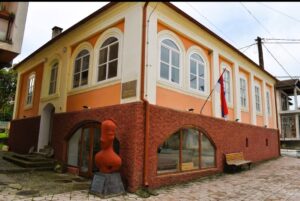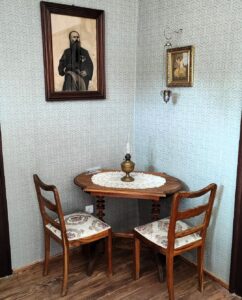




The local museum of the vicinity of the Aleksandrovac was officially opened on January 27, 1991. It occupies a worthy place and reputation in professional circles, the scientific and general public and is an established institution in the field of cultural property protection. The creation of the museum is primarily related to the “Collegium historicum Župa” association, i.e. group founded at the gymnasium in Aleksandrovac, in the seventies of the 20th century, which worked for decades to collect, preserve and present the cultural and historical wealth of the County under the tutelage of history professor Miloslav Bondžić. From their many decades of dedicated work, the Native Collection housed in the House of Culture was first created, and later the museum.
Since its opening, the museum has been located in the very center of Aleksandrovac, in the house of “Pop (priest) Marko” , which is under state protection. The total area of the basement and upper floors of the museum is 381 square meters and it houses an archaeological, ethnographic and historical exhibition with about 3000 objects. The most valuable exhibits are four Neolithic statues that belong to the Vinča cultural group from the Vitkovačko polje site and are the works of the first farmers from this area about 6,000 years ago. During the great world exhibition dedicated to women in prehistory, these statues were exhibited in many world museums, in Nice, Copenhagen, London, Paris, Japan. When exhibited at the great world exhibition in 1991 in the Terra Amata Museum in Nice, the statues were given the names: Lady of Aleksandrovac, Venus de Župa, Madame de Vitkovo and Madame de Venčac.
In addition to the Neolithic era, the archeological display of the Župa local Museum contains several other valuable exhibits from later periods. First of all, we should mention the bronze ax and the Roman warrior’s belt from the site of the Ivković house, which are also known to the general and scientific public.
The ethnographic display is the richest and, with over 600 items, represents a faithful replica of life in the parish’s wine-growing settlements, which are called Poljane and are unique in this area.
The historical setting is presented for the most part with photographs that follow the historical development of the Parish from the end of the 19th century to the present day. Also, this exhibition contains parts of weapons from the time of the First Serbian Uprising, the First and Second World Wars, as well as an abundance of documents from that period.
The museum’s photo library contains about 7,000 photographs and negatives, and the library contains about 1,700 books. The museum has a very developed publishing activity, where we especially highlight the magazine “Zupski zbornik”, which is published once a year.











